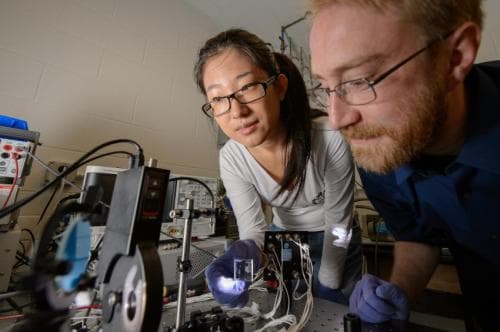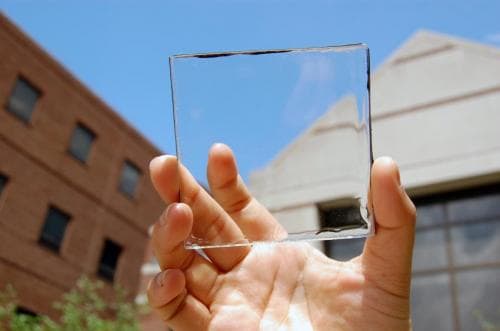Transparent Solar Concentrator From MSU Could Revolutionize Solar Power Generation
A new kind of solar concentrator developed by engineers at the Michigan State University (MSU) is sure to blow your mind. Called the "transparent luminescent solar concentrator", the solar cells are actually plates that you can see through. This means that if we use them over a window, our view isn't blocked and the sunlight that peeps in all afternoon in our houses and office buildings can be used to convert electrical energy. How awesome is that? Once you start thinking of its applications, you will realize that they can be used on any clear surface, be it your cellphone's screen or the newly bought smartwatch to power them up. The MSU College of Engineering researchers has achieved significant improvement in the amount of energy produced through such solar cells.
The research surrounding energy generation from transparent solar cells used over luminescent plastic-like materials isn't particularly new, but so far all such solar cells featured really inefficient power output and the materials in use were mostly highly colored glass. The team of engineers led by Richard Lunt of MSU developed this solar harvesting system using small organic molecules that are used to absorb sunlight's specific nonvisible wavelengths.

The researchers share that these materials can be tuned to capture just the ultraviolet light and the near infrared wavelengths which later ‘glow’ at another wavelength in the infrared. This glowing infrared light is diverted to the edge of the plastic where it's converted to electrical power using thin strips of photovoltaic solar cells. The reason behind the materials looking exceptionally transparent to us humans is that they don't absorb or emit light in the visible spectrum at all.
Though in its nascent stage, owing to its flexibility this technology can have really great commercial and industrial applications in the near future. By developing surfaces for solar harvesting such that users don't even know they are there - opens us a wide arena of deploying solar energy in totally new places in a total non-intrusive manner.

The team is right now working on improving their technology's energy-producing efficiency. The current solar conversion efficiency is about 1%, but the researchers believe that full optimization can take those numbers to 5%. What are your thoughts on the transparent solar cells and their applications? Share with us in comments below.
Source: #-Link-Snipped-#
The research surrounding energy generation from transparent solar cells used over luminescent plastic-like materials isn't particularly new, but so far all such solar cells featured really inefficient power output and the materials in use were mostly highly colored glass. The team of engineers led by Richard Lunt of MSU developed this solar harvesting system using small organic molecules that are used to absorb sunlight's specific nonvisible wavelengths.

The researchers share that these materials can be tuned to capture just the ultraviolet light and the near infrared wavelengths which later ‘glow’ at another wavelength in the infrared. This glowing infrared light is diverted to the edge of the plastic where it's converted to electrical power using thin strips of photovoltaic solar cells. The reason behind the materials looking exceptionally transparent to us humans is that they don't absorb or emit light in the visible spectrum at all.
Though in its nascent stage, owing to its flexibility this technology can have really great commercial and industrial applications in the near future. By developing surfaces for solar harvesting such that users don't even know they are there - opens us a wide arena of deploying solar energy in totally new places in a total non-intrusive manner.

The team is right now working on improving their technology's energy-producing efficiency. The current solar conversion efficiency is about 1%, but the researchers believe that full optimization can take those numbers to 5%. What are your thoughts on the transparent solar cells and their applications? Share with us in comments below.
Source: #-Link-Snipped-#
0

